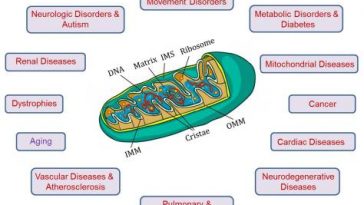In the world of health and wellness, nitric oxide (NO) boosters have gained popularity for their purported benefits in enhancing athletic performance and cardiovascular health. However, what many don’t realize is that excessive nitric oxide can lead to harmful effects on the body, particularly through a process known as nitrosative stress. In this blog post, we’ll explore the peroxynitrite cycle, the risks associated with high levels of nitric oxide, and how methylene blue—specifically our MitoBolic Blue—can help mitigate these dangers.
The Dual Nature of Nitric Oxide
Nitric oxide is a molecule naturally produced in the body, playing crucial roles in vasodilation, neurotransmission, and immune response. At optimal levels, it contributes to healthy blood flow and cellular communication. However, when produced in excess, nitric oxide can become a double-edged sword.
The Peroxynitrite Cycle and Nitrosative Stress
Understanding the Peroxynitrite Cycle
When nitric oxide levels are elevated, especially in the presence of superoxide radicals (O₂⁻), they combine to form peroxynitrite (ONOO⁻), a highly reactive and damaging molecule.
Peroxynitrite initiates a harmful cycle:
- Cellular Damage: Peroxynitrite attacks proteins, lipids, and DNA, leading to cellular dysfunction.
- Amplification: The damage stimulates further production of nitric oxide and superoxide, perpetuating the cycle.
- Nitrosative Stress: The accumulation of reactive nitrogen species (RNS) like peroxynitrite leads to nitrosative stress, disrupting normal cellular processes.
Consequences of Nitrosative Stress
- Mitochondrial Dysfunction: Impaired energy production and increased oxidative stress.
- Inflammation: Chronic activation of inflammatory pathways.
- Neurodegeneration: Damage to neurons contributing to diseases like Alzheimer’s and Parkinson’s.
- Cardiovascular Issues: Endothelial dysfunction leading to hypertension and atherosclerosis.
The Risks of Nitric Oxide Boosters
While nitric oxide boosters are marketed for their ability to enhance blood flow and performance, they may inadvertently contribute to nitrosative stress when used excessively or without proper guidance.
Potential Negative Effects
- Overproduction of NO: Supplements can elevate nitric oxide levels beyond physiological norms.
- Enhanced Peroxynitrite Formation: Increased NO heightens the risk of forming peroxynitrite.
- Oxidative Damage: The resultant nitrosative stress can damage tissues and organs.
Bringing It All Together
While nitric oxide (NO) boosters can enhance performance, excessive NO can trigger harmful reactions, including nitrosative stress, which may lead to chronic health issues. Methylene blue can help by optimizing the benefits of NO boosters, allowing them to work as intended while mitigating negative effects. It achieves this by interrupting the harmful peroxynitrite cycle and supporting mitochondrial function, offering a balanced approach to NO supplementation for optimal health and performance.
Key Takeaways
- Balance is Crucial: While nitric oxide booster are beneficial, moderation is key to preventing harmful side effects.
- Be Cautious with Supplements: Even well-known supplements may be harmful when over-used.
- Consider Protective Agents: Incorporating methylene blue can help mitigate the risks associated with excessive nitric oxide.
Conclusion
Understanding the complex interplay between nitric oxide, the peroxynitrite cycle, and nitrosative stress underscores the importance of approaching health trends with informed caution. Rather than jumping on the nitric oxide booster bandwagon, consider the potential risks and explore protective strategies like methylene blue supplementation with MitoBolic Blue.
Your health is a balance—make informed choices to keep it in harmony.
Disclaimer: This blog post is for informational purposes only and is not intended as medical advice. Consult with a healthcare professional before starting any new supplement or health regimen.
Latest news
The Hidden Dangers of Excessive Nitric Oxide: How
Methylene Blue Can Help









